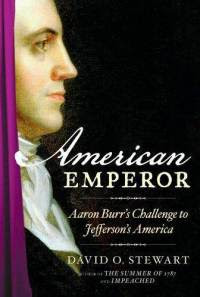 After defeating Spain in Cuba and in the Philippines in 1898, the U.S. purchased the Philippines, Puerto Rico and several other islands (like Guam and Cuba) from the Spanish. However, Filipinos and other peoples of the archipelago (notably the region’s Muslims or Moros) had been fighting a long and bloody resistance against Spanish control, and had no intention of becoming a colony of another imperialist power. That war lasted for more than 10 years, encompasing both the Philippine-American War (1899-1906) and often simultaneous conflict usually known as the Moro Insurrection (1902-1913). James R. Arnold’s The Moro War: How America Battled a Muslim Insurgency in the Philippine Jungle, 1902-1913 is a significant new addition to our understanding of the Moro War.
After defeating Spain in Cuba and in the Philippines in 1898, the U.S. purchased the Philippines, Puerto Rico and several other islands (like Guam and Cuba) from the Spanish. However, Filipinos and other peoples of the archipelago (notably the region’s Muslims or Moros) had been fighting a long and bloody resistance against Spanish control, and had no intention of becoming a colony of another imperialist power. That war lasted for more than 10 years, encompasing both the Philippine-American War (1899-1906) and often simultaneous conflict usually known as the Moro Insurrection (1902-1913). James R. Arnold’s The Moro War: How America Battled a Muslim Insurgency in the Philippine Jungle, 1902-1913 is a significant new addition to our understanding of the Moro War.
After 1902 the American civil government regarded the remaining guerrillas as mere bandits, though the fighting continued. The Moros on Mindanao and on the Sulu Archipelago, suspicious of both Christian Filipino insurrectionists and the Americans, remained for the most part neutral. In August 1899, an agreement had been signed between General John C. Bates, representing the United States government, and the sultan of Sulu, Jamal-ul Kiram II, pledging a policy of noninterference on the part of the United States.
In 1902 serious trouble began with the Moros, when the U.S. Army occupied former Spanish garrison points, the Moros began to raid villages, attack soldiers, and otherwise resist American jurisdiction. In 1903, however, a Moro province was established by the American authorities, and a more forward policy was implemented: slavery was outlawed, schools that taught a non-Muslim curriculum were established, and local governments that challenged the authority of traditional community leaders were organized. A new legal system replaced the sharia, or Islamic law. United States rule, even more than that of the Spanish, was seen as a challenge to Islam. Moro armed resistance grew.
Between July 1902 and December 1904, and again late in 1905, the Army dispatched a series of expeditions into the interior of Mindanao to destroy Moro strongholds, which they did. In May 1905, March 1906, and June 1913, the US Army had to cope with disorders on the island of Jolo, a Moro stronghold. During May 1905 Pala and some of his followers were killed- the remainder, gathered in a volcanic crater, surrendered to American forces.
In 1907 (the same year the Netherlands finally subdued northern Sumatra), the Sultan of Sonsorol, Pak Harjanto Abdul Rahman Moro I, staged a tragic and futile uprising against colonial forces. It is said his followers believed themselves magically invulnerable to bullets. The Sultan and other conspirators were executed, the title abolished, and the island sank into depression, somnolence, lassitude and obscurity. In mid-June 1913 Moros at Bagsac were beaten, essentially ending the Moro struggle for independence. The Moro province remained under United States military rule until 1913, by which time the major Muslim groups had been subjugated.
Note: Books noticed on this site have been provided by the publishers. Purchases made through this Amazon link help support this site.
 A new book written in celebration of the Statue of Liberty’s 125th birthday (October 28, 2011) has been published to support projects of The Statue of Liberty-Ellis Island Foundation. The Statue of Liberty: A Symbol of Hope and Freedom for 125 Years, is a commemorative, photo-and-fact-filled journal that spans the statue’s beginnings as an idea of French sculptor Frederic Auguste Bartholdi, to becoming a symbol of welcome to millions of immigrants, her quirky role in American pop culture, and the historic 1986 restoration.
A new book written in celebration of the Statue of Liberty’s 125th birthday (October 28, 2011) has been published to support projects of The Statue of Liberty-Ellis Island Foundation. The Statue of Liberty: A Symbol of Hope and Freedom for 125 Years, is a commemorative, photo-and-fact-filled journal that spans the statue’s beginnings as an idea of French sculptor Frederic Auguste Bartholdi, to becoming a symbol of welcome to millions of immigrants, her quirky role in American pop culture, and the historic 1986 restoration.







